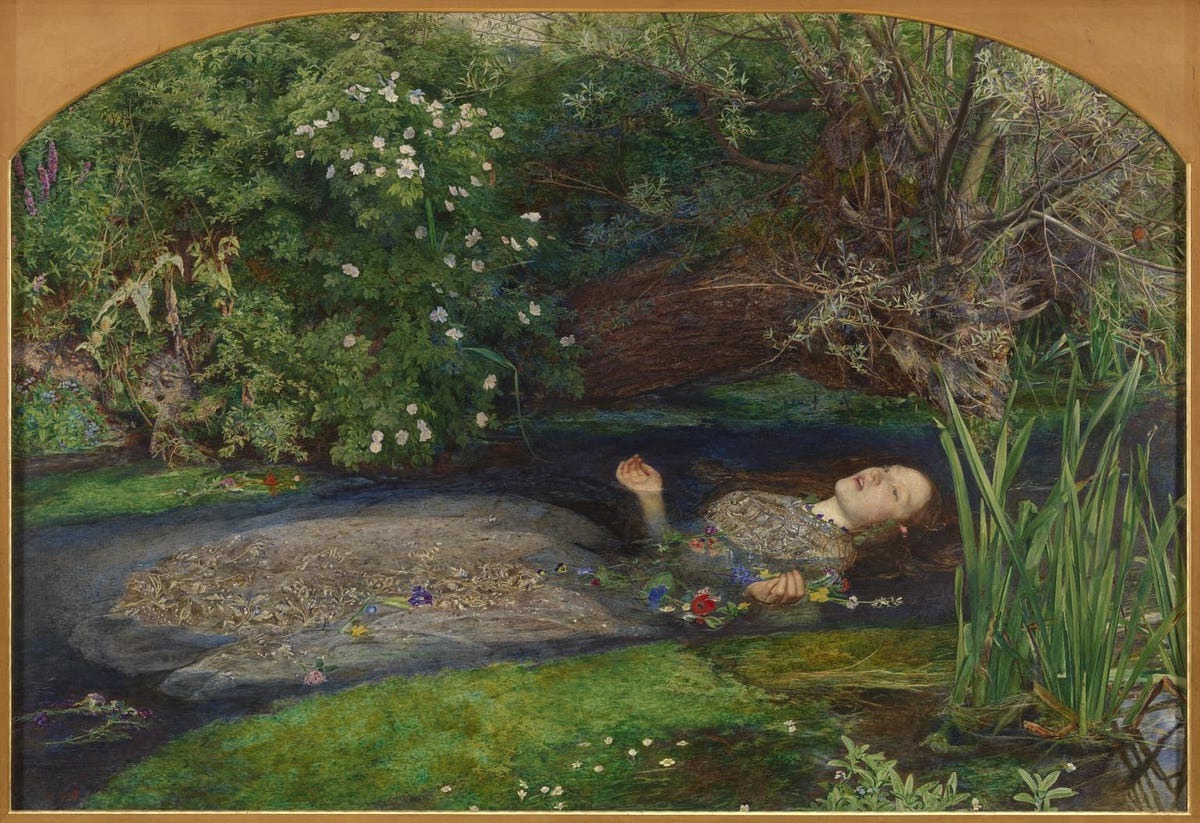The Hidden Story Behind ‘Ophelia’ By John Everett Millais

Have you ever wondered about the story behind 'Ophelia' by John Everett Millais? This famous painting, created in 1851-1852, captures a tragic scene from Shakespeare's play "Hamlet." Ophelia, a character driven to madness, floats in a river surrounded by flowers. Millais's attention to detail and use of vibrant colors make this artwork stand out. But there's more to it than just a beautiful image. The painting's background, the artist's inspiration, and the meticulous process he followed all contribute to its lasting impact. Let's dive into the fascinating details that make 'Ophelia' a masterpiece.
The Inspiration Behind 'Ophelia'
John Everett Millais' painting 'Ophelia' captures a tragic scene from Shakespeare's play "Hamlet." The artwork depicts Ophelia singing while floating in a river, moments before her death. Millais' attention to detail and use of vibrant colors make this painting a masterpiece. Let's explore the locations that inspired this iconic work.
The River Hogsmill
Millais chose the River Hogsmill in Surrey, England, as the backdrop for Ophelia's watery grave. He spent hours by the river, meticulously painting every leaf and flower.
Ewell Village: This quaint village provided the perfect setting for Millais' work. The serene environment and lush greenery of Ewell inspired the natural elements in the painting.
Hogsmill Riverbank: Millais set up his easel along the riverbank, capturing the flowing water and surrounding flora. The river's gentle current and reflective surface added depth to the scene.
The Model: Elizabeth Siddal
Elizabeth Siddal, a poet and artist herself, posed for Millais as Ophelia. Her delicate features and ethereal beauty brought the character to life.
Siddal's Studio: Elizabeth posed in a bathtub filled with water to mimic the floating Ophelia. Millais kept the water warm with lamps, but Siddal still fell ill from the long hours spent posing.
Siddal's Home: Elizabeth's home in London became a second studio for Millais. He often visited to sketch her in various poses, ensuring he captured the perfect expression of Ophelia's sorrow.
The Flowers and Plants
Millais' dedication to botanical accuracy is evident in the painting. He included various flowers and plants mentioned in Shakespeare's text.
Kew Gardens: Millais visited Kew Gardens to study and sketch different plant species. The gardens' extensive collection provided him with the necessary references for his work.
Chelsea Physic Garden: Another source of inspiration, the Chelsea Physic Garden, offered Millais a chance to observe rare and exotic plants. These detailed studies helped him accurately depict the flora in 'Ophelia.'
The Artistic Techniques
Millais employed several innovative techniques to create the lifelike quality of 'Ophelia.' His use of color, light, and texture set the painting apart.
Pre-Raphaelite Brotherhood: As a founding member of the Pre-Raphaelite Brotherhood, Millais adhered to their principles of vivid color and meticulous detail. This artistic movement greatly influenced his approach to 'Ophelia.'
Natural Light: Millais painted outdoors to capture the natural light and shadows. This technique added realism to the scene, making the water and foliage appear almost tangible.
The Legacy of 'Ophelia'
'Ophelia' remains one of the most celebrated works of the Pre-Raphaelite movement. Its influence extends beyond the art world, inspiring literature, music, and film.
Tate Britain: The painting is housed in Tate Britain, where it continues to captivate visitors. Its presence in the gallery ensures that Millais' masterpiece will be appreciated for generations to come.
Cultural Impact: 'Ophelia' has inspired countless adaptations and reinterpretations. From modern art to popular culture, the painting's haunting beauty resonates with audiences worldwide.
The Enduring Impact of 'Ophelia'
John Everett Millais' 'Ophelia' remains a powerful piece in the world of art. Its blend of tragedy and beauty captures viewers, making them ponder the story behind the painting. Millais' attention to detail, from the flowers to Ophelia's expression, showcases his skill and dedication. This painting not only tells a story from Shakespeare's Hamlet but also reflects the Pre-Raphaelite Brotherhood's ideals.
The use of vibrant colors and natural elements brings the scene to life, making it timeless. 'Ophelia' continues to inspire artists and art lovers alike, proving its lasting significance. Whether you're an art enthusiast or a casual observer, this painting offers something unique. Its ability to evoke emotion and provoke thought ensures its place in art history. Millais' masterpiece is more than just a painting; it's a window into a world of emotion and storytelling.

